



 |
 |
 |
 |
|
Sheet
flows
|
|
Sheet flows form broad, laterally extensive blankets of lava. They form during relatively high effusion rate eruptions, are very fluid, and tend to fill-in and pond in low-lying areas. Fast extrusion allows individual lobes of lava to quickly coalesce back together into a sheet. The sheet of lava then grows a solid crust on its upper surface while the lava remains molten for a time in the flow’s interior. This solid crust can later collapse if the lava in the interior of the flow drains away. Areas of collapse are very common in the middle of sheet flows. Sheet flows can exhibit a variety of surface textures (such as LOBATE, ROPY, LINEATED, and JUMBLED) depending on the local flow conditions when the upper surface crust formed. The 1998 eruption at Axial Volcano produced a sheet flow whose upper surface is lobate in texture. Ropy, lineated, and jumbled textures are found in the floor of the collapsed parts of the flow. |
|
|
LOBATE lava morphology (below) is created when a sheet flow advances one lobe at a time, but it moves rapidly enough that the lobes coalesce internally to form a single fluid core beneath a solid upper crust. Lobate flows commonly inflate and later collapse. Local depressions in the lava surface are common, marking places where individual lobes met and merged as the lava advanced. Lava pillars often underlie these depressions, providing partial support for the lava carapace if the molten interior later subsides. |
|
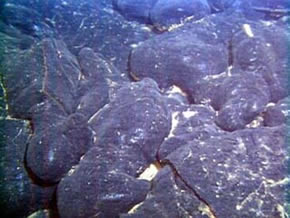 |
 |
|
LINEATED sheet flows (below) are formed where molten lava moves out from under the edge of a solid crust. Linear striations are scraped into the top surface of the lava, parallel to the flow direction, and then are quickly frozen in place as the lava surface solidifies. |
|
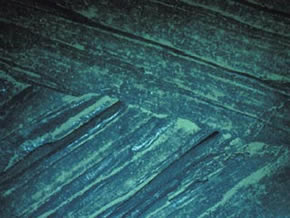 |
 |
|
ROPY lava morphology (below) forms when the thin surface crust on a fast-moving sheet flow buckles under compression. The ropes are typically arcuate and oriented transverse to flow direction. Lava whorls are spiral patterns of ropy texture formed along shear zones between two parts of a flow moving at different speeds. |
|
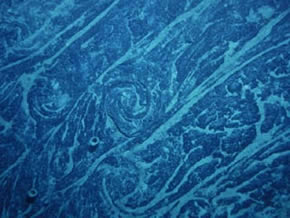 |
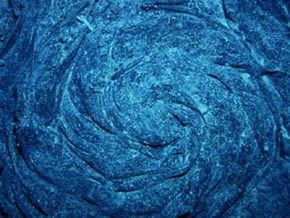 |
|
JUMBLED sheet flow texture (below) forms by multiple generations of folding of the lava crust. It is formed by mechanical disruption of the lava crust while the lava is still moving, particularly along shear zones at the edges of lava channels. |
|
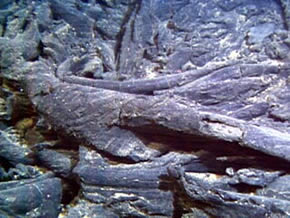 |
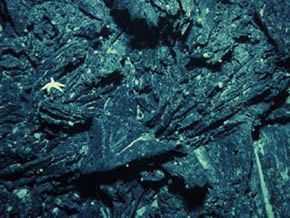 |
|
Related
Virtual Sites: Other
NeMO-related concepts: |
| NeMO Home |About NeMO | Expeditions | NeMO Net | Explore | Dive! | Education |